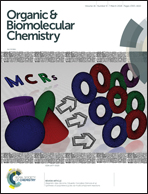Target specificity of mammalian DNA methylation and demethylation machinery
Abstract
DNA methylation is an essential epigenetic modification for mammalian embryonic development and biology. The DNA methylation pattern across the genome, together with other epigenetic signals, is responsible for the transcriptional profile of a cell and thus preservation of the cell's identity. Equally, the family of TET enzymes which triggers the initiation of the DNA demethylation cycle plays a vital role in the early embryonic development and a lack of these enzymes at later stages leads to a diseased state and dysregulation of the epigenome. DNA methylation has long been considered a very stable modification; however, it has become increasingly clear that for the establishment and maintenance of the methylation pattern, both generation of DNA methylation and its removal are important, and that a delicate balance of ongoing DNA methylation and demethylation shapes the final epigenetic methylation pattern of the cell. Although this epigenetic mark has been investigated in great detail, it still remains to be fully understood how specific DNA methylation imprints are precisely generated, maintained, read or erased in the genome. Here, we provide a biochemist's view on how both DNA methyltransferases and TET enzymes are recruited to specific genomic loci, and how their chromatin interactions, as well as their intrinsic sequence specificities and molecular mechanisms, contribute to the methylation pattern of the cell.

- This article is part of the themed collection: Nucleic Acid Modifications


 Please wait while we load your content...
Please wait while we load your content...